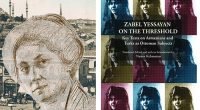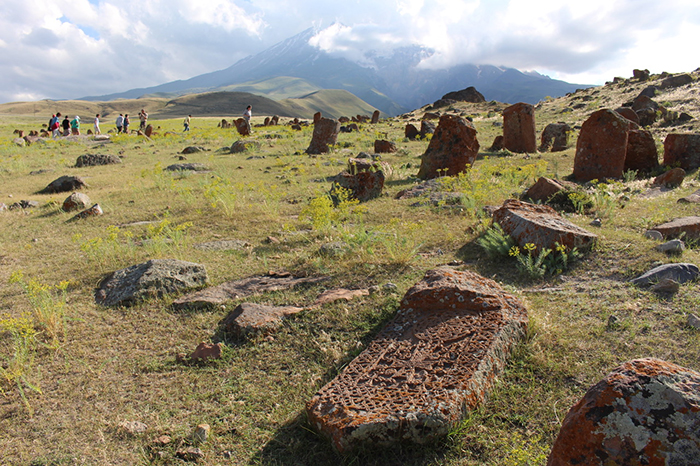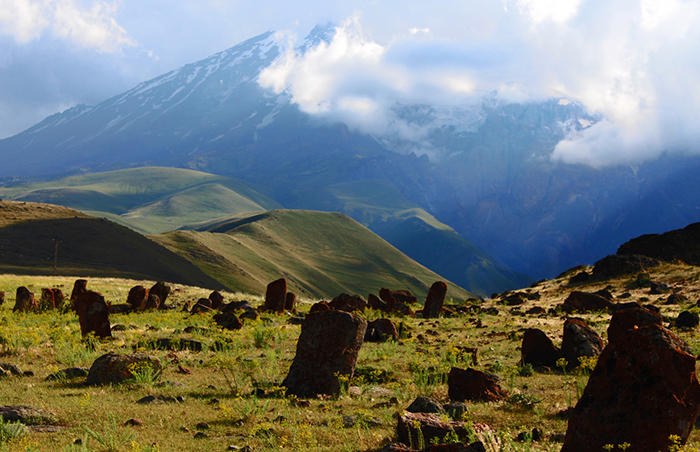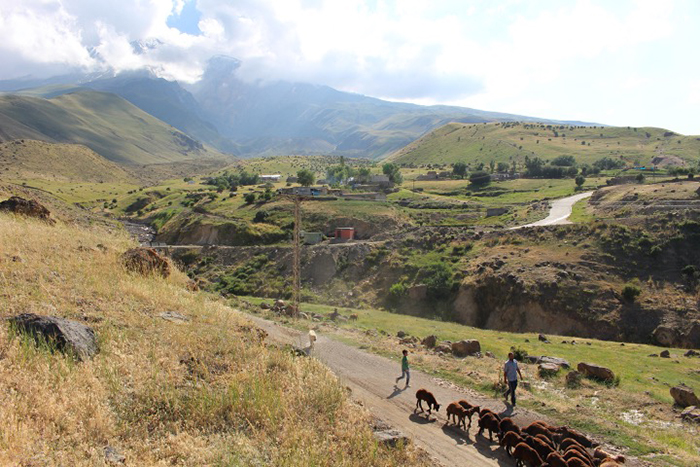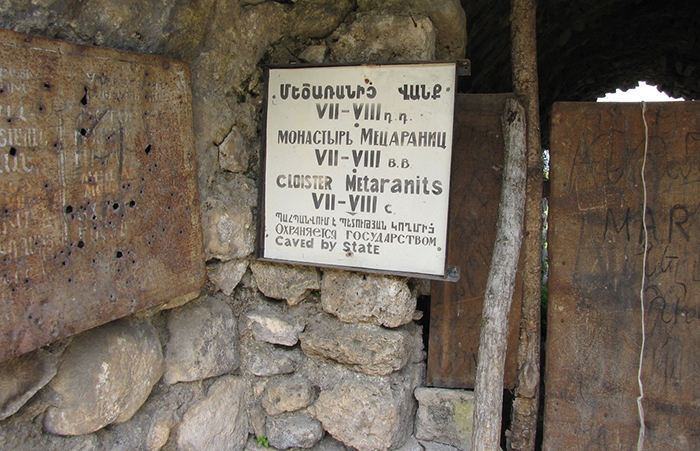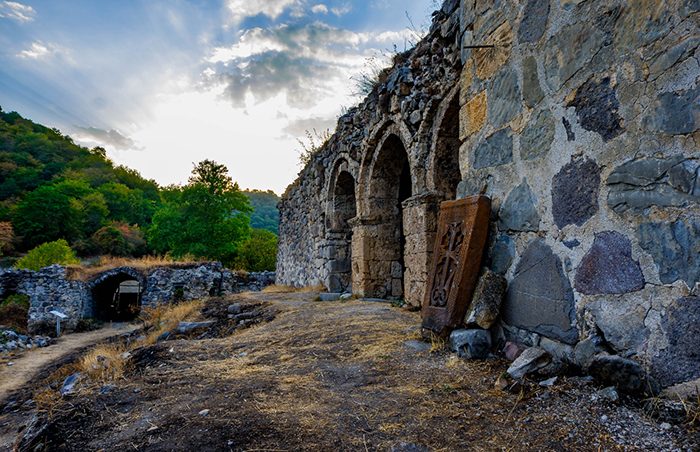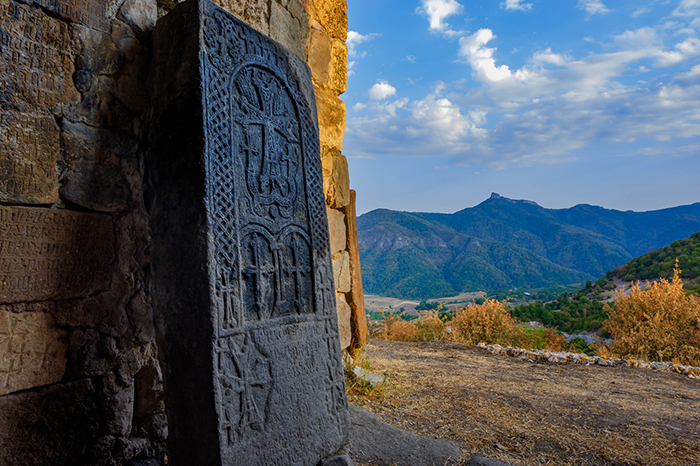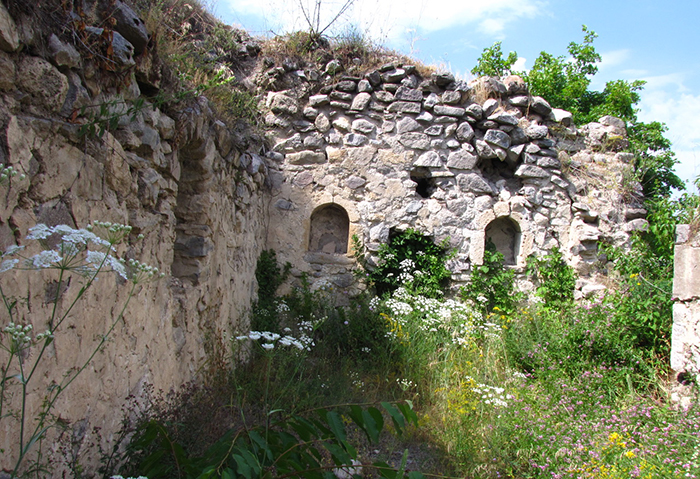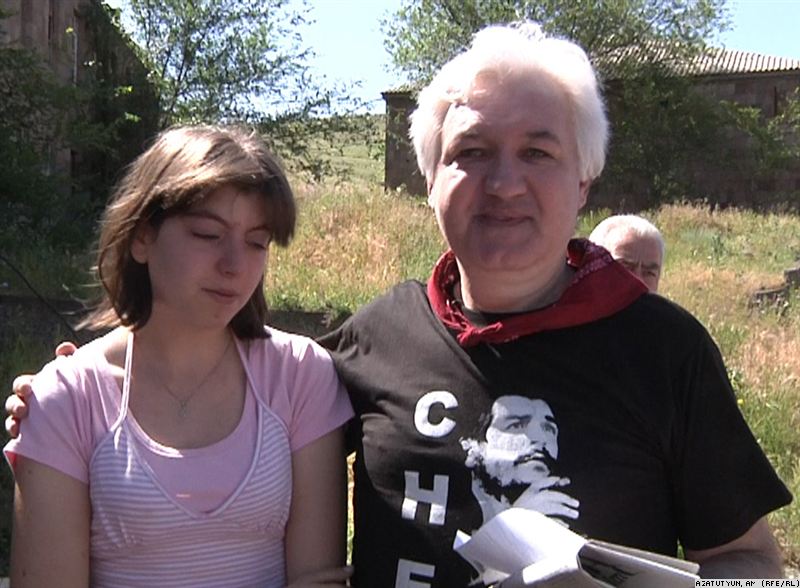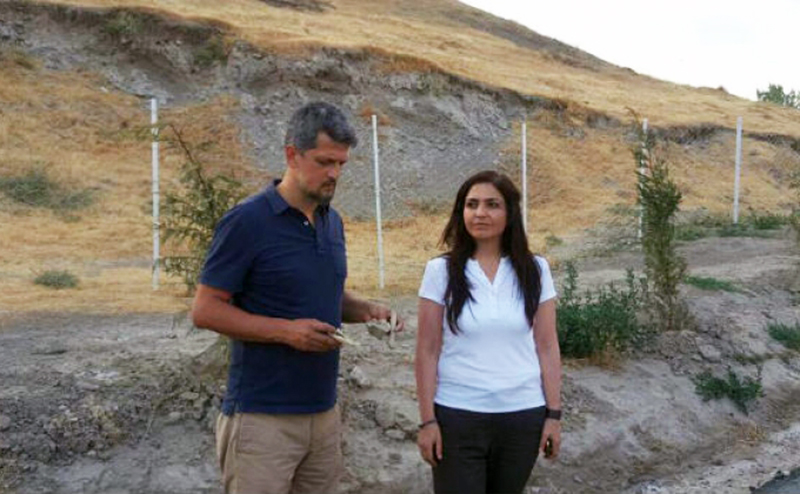By Hovsep Daghdigian
Among the saints revered in the Armenian and other Christian churches is Surb (Saint) Hakob, also referred to as Saint Jacob of Nisibis, and Saint James of Mtsbin. This “Saint James” should not to be confused with other Saint James’s. Nisibis, also known as Mtsbin, is a city in southern Turkey near the Syrian border, about 75 km SE of Dikranagerd. Christians of Nisibis, which included many Armenians, traced their Christian origins to Saint Thaddeus who, with Saint Bartholomew, preached and were martyred in Armenia prior to Armenia becoming the first nation to accept Christianity early in the 4th c.
In the 4th c Rome and Persia were contending for power in Armenia and the region. The Persian king sent an Armenian traitor, Anak, to assassinate Armenia’s king Khosrov and his family. Members of the Armenian court, enraged by their King’s assassination, killed Anak and all his family members that they could find. Anak’s son Gregory, however, escaped to Cappadocia where he was educated within its Christian community. Similarly, the murdered Armenian King Khosrov’s son, Drtad, was sent to Rome where he received an education as befitted a future king. Rome later returned Drtad to the Armenian throne. Passing through Cappadocia, Drtad and Gregory met and returned together to Armenia. Gregory converted Drtad, and the Armenian nation, to Christianity in 301 AD, becoming “Gregory the Illuminator”, founder of the Armenian church.
Hakob probably was related to Gregory, either as a cousin or nephew. Some sources indicate he too may have spent some time in Cappadocia. As a youth Hakob abandoned city life, devoting himself to religion, and living an austere existence in the mountains near Nisibis. He became known for his compassion, honesty, sincerity and strong sense of justice. When the bishop of the large Christian community of Nisibis died, the church fathers tried to convince Hakob to take the position, despite his lack of refinement. Numerous attempts to convince him finally succeeded.
Bishop Hakob of Nisibis participated in numerous Christian councils attended as well by representatives of the Armenian church, such as the Council of Nicaea in 325 AD which established the Nicene Creed, to which the Syriac and Armenian church adhered, and which is a fundamental profession of faith in the Armenian church. Byzantine emperor Constantine also attended the council and developed immense respect for Bishop Hakob.
Hakob is reported to have performed many miracles. In one instance a couple of men asked him for a donation to help bury their friend who, faking death, was lying on the ground. Hakob said a prayer, after which the men, checking their friend on the ground, discovered that he was indeed dead. They beseeched Hakob to bring their friend back to life, which he did.
While traveling through a village, Hakob encountered a group of young women washing in a stream. They immodestly refused to cover themselves properly in the presence of a stranger. In response to a prayer by Surb Hakob, the stream dried up and the women’s hair turned white. The villagers urged Hakob to allow the stream to flow again, which he did, but the immodest women’s white hair remained.
Hakob urged a Persian judge to reconsider an unfair judgement which he had issued. The judge refused. When Surb Hakob, with a prayer, turned a stone into dust the judge reversed his decision.
Following the death of Byzantine Emperor Constantine in 337, the Persian Sassanid King Shapur II saw an opportunity to recapture territory Persia had previously lost to Rome. He attacked Roman held territories in upper Mesopotamia, Armenia, and in 338 attacked Nisibis. Hakob mounted Nisibis’ defensive walls and, praying, caused a swarm of insects to attack the large invading army which included war machines and elephants. The insects so irritated the soldiers and elephants that they caused the army to retreat. The Persian general, eyeing the tower upon which Surb Hakob stood, claimed he saw Emperor Constantine, who had previously died, leading the defense. The Persian assault failed.
Troubled by the weakening faith of his people, Surb Hakob desired to find Noah’s “redeeming Ark”. He determined that if he could retrieve and display a piece of the Ark from Mt. Ararat[i], this would bolster his people’s faith.
One variant of Sp. Hakob’s jourrney up Mt. Ararat is described by Pavstos Buzand[ii], a 5th c Armenian historian. Other accounts differ slightly:
As Surb Hakob ascended the parched slope of Mt. Ararat, he with his colleagues grew tired and in need of water. They fell to the ground and prayed. A spring then gushed forth near Hakob’s head. According to Pavstos Buzand, “the spring, called Hakob’s spring, remains to this day”. Proceeding further up Mt. Ararat, near the summit, Hakob grew tired and fell asleep. An angel descended, left a piece of wood from the Ark near his head, and indicated that Hakob must search no further. As he descended the people around Ararat rejoiced at the presence of such a holy man who brought a gift of wood from the Ark. Surb Hakob then proceeded to visit the “great servant of the Armenian king”, Prince Manachir, near Lake Van whom he had heard was a merciless and unjust man. But Hakob hoped to soften Manachir’s heart and install in him fear of God. Instead, Prince Mananchir scorned Surb Hakob, throwing 800 innocent prisoners into the sea. Hakob, with his colleagues grieving for the innocent victims, journeyed to the base of a nearby mountain. Again, he prayed and a spring came forth from the ground. Climbing to the summit of the mountain, he cursed the realm of the prince causing the death of Prince Manachir, his wife, and his seven sons. According to another source, though, one of Manachir’s sons repented and thus survived.


Surb Hakob Monastery, on the NE slope of Mt. Ararat, was built in 341 AD at the place where Hakob received the wood from the Ark. There may have been a church, St. James, in the nearby village of Akori[iii]. The monastery was said to be of a cruciform plan with a central dome. In 1829 Baltic German explorer Friedrich Parrot, with Armenian writer Khachatur Abovian, were the first people known to summit Mt. Ararat. On the way to the summit, they visited Surb Hakob monastery which had engraved inscriptions dating to the 13th and 14th centuries. In the summer of 1840, an earthquake or volcanic explosion destroyed Surb Hakob monastery and the village of Akori. Many of the residents subsequently settled in Kamaris, a town in Kotayk province in the present Republic of Armenian. Currently the small Kurdish village of Yenidogan (“New Village”) is situated on or near the site of Akori. The monastery no longer exists, though there remain remnants of an Armenian cemetery with Armenian tombstones.
A number of Armenian churches and chapels named “Surp Hakob,” or equivalently “St. James of Nisibus” or “Saint James of Mtsbin”, exist. The history of some of these churches remains obscure.
About a mile outside the village of Kolotak, Martakert Province, in Artsakh (Nagorno Karabagh) is Hakobavank, founded in the 5-7th c, which underwent modifications until the 12th c. In the 14th c. the monastery became an important center of the region of Mets Arank, acquiring the name of Metsaranits Monastery. Between the 9th and 18th c the buildings were modified and maintained, with relics of Sp. Hakob kept until the 19th c. The monastery contains two churches, rooms for clergy, and in the Middle Ages was a pilgrimage site for Armenians in Eastern Armenia.
In 2022 a renovation project was initiated to restore a workable place of worship for the villagers, and refugees settling in Kolotak coming from areas of Artsakh now occupied by Azerbaijan. The monastery is also an archaeological and architectural site, with an inscription dating to 853 and medieval water pipes made of clay and wooden branches on the ground. A description of the completed Hakobavank restoration project can be seen on the reArmenia web page at https://rearmenia.com/en/collaborations/lets-restore-the-hakobavank-monastery?tab=updates .
Surb Hakob died either in 338 or 350 and is buried in the Church of Saint Jacob in Nisibis. A fragment of wood from the Ark resides in the museum at Echmiadzin. In the Armenian Apostolic Church, Surb Hakob of Nisibis’ holiday is celebrated on the Saturday between December 12-18.
————————————————-
[i] Early accounts cite the Ark as having landed on Mt. Qardu, southern Turkey, in a region called “Kordukh” in Armenian.
[ii] See “The Epic Histories (Buzandaran Patmut’iwnk)” translated by Nina Garsoian, Harvard University Press, 1989 or Robert Bedrosian’s translation at https://archive.org/details/HistoryOfTheArmeniansByPawstosBuzand_569
[iii] Akori was an Armenian village on the NE slope of Mt. Ararat at 5,719 feet altitude, near the border with the current Armenian Republic. The earthquake of 1840 destroyed the village and Surb Hakob monastery. In 481 AD a force of 400 Armenians routed a force of 7,000 Persians in the Battle of Akori. Akori was visited by explorers James Brice, Friedrich Parrot with Khachaur Abovian, and H.F.B. Lynch. For more information search for “Unseen Armenia – Kamaris and Akori”, by Hovsep Daghdigian” on the internet.


